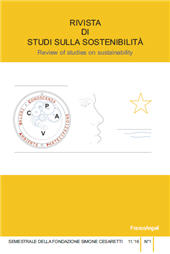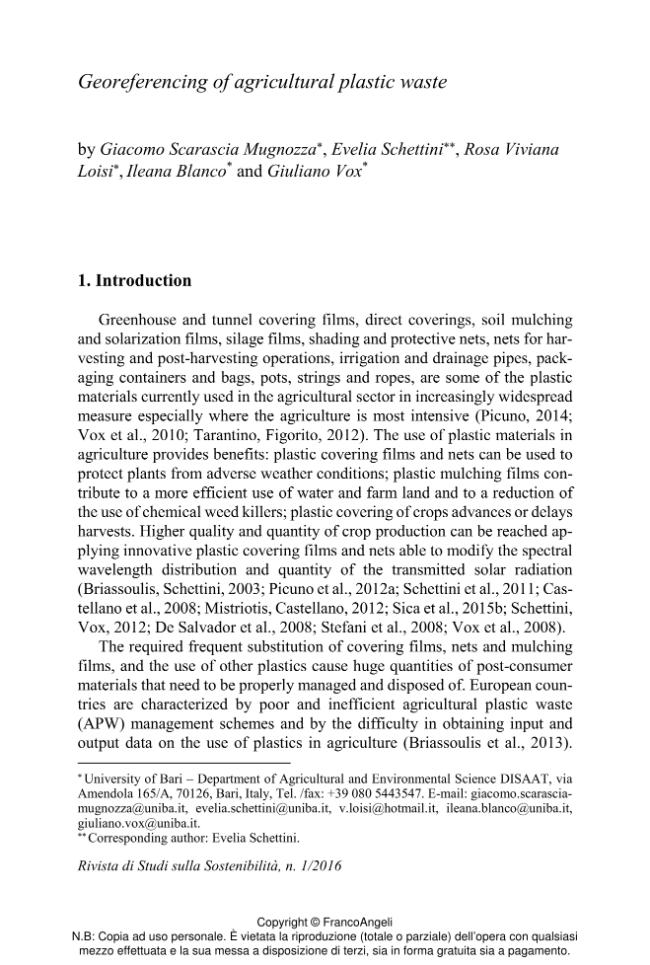Georeferencing of agricultural plastic waste
71-82 p.
The use of plastic materials in agriculture, for greenhouse covering, soil mulching, irrigation pipes, containers and bags, generates a huge amounts of plastic waste that must be properly disposed of. An adequate waste management and disposal system requires the knowledge of the waste generation on the land. This paper presents the results of a research, based on the application of a Geographical Information System, for mapping the waste generation in the municipality of Trinitapoli, Italy. Aim of the research is to identify the points of waste generation and to quantify the waste. A dedicated geo-referenced database with data on the spatial distribution and amount of the plastic wastes was created; waste density ranged from 3.3 kg ha-1yr-1 to 861 kg ha-1yr-1.
L'uso di materiali plastici in agricoltura, quali film per la copertura di serre, film per la pacciamatura del terreno, tubi d'irrigazione, contenitori di pesticidi e sacchetti di fertilizzanti, genera un enorme quantità di rifiuti plastici che devono essere correttamente smaltiti. Un sistema adeguato di gestione e smaltimento delle plastiche presuppone la conoscenza della produzione dei rifiuti sul territorio. Questo lavoro presenta i risultati di una ricerca, basata sull'applicazione di un Sistema di Informazione Geografica, per la mappatura della produzione di rifiuti nel comune di Trinitapoli, in Italia. Lo scopo della ricerca è quello di identificare i punti di generazione dei rifiuti plastici e di quantificarli. È stato creato un database georeferenziato dedicato, con i dati sulla distribuzione spaziale e la quantità di rifiuti di plastica generati. La densità dei rifiuti prodotti varia da 3,3 kg ha-1 a 861 kg ha-1 per anno.
-
Articoli dello stesso fascicolo (disponibili singolarmente)
-
Informazioni
Codice DOI: 10.3280/RISS2016-001007
ISSN: 2239-1959
PAROLE CHIAVE
- GIS, mappe, uso del suolo, gestione dei rifiuti agricoli, sostenibilità, materiali plastici in agricoltura
- GIS, mapping, land use, agricultural waste management, sustainability, agricultural plastic materials



